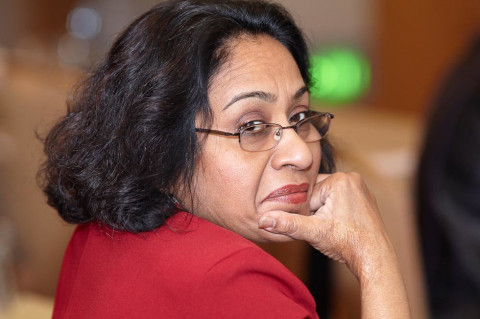What’s the Difference Between Cultural Diversity and DEI Training?
As a training provider, one of our most important jobs is ensuring our clients receive the training they need.
Sometimes, however, stakeholders can be a little confused about what exactly that is!
A common confusion we have to pick through and explain surrounds what cultural diversity training entails as opposed to Diversity, Equity & Inclusion (DEI) training.
Although there is an overlap between the two, there are also key differences between them.
For example, both cultural diversity and DEI training aim to promote inclusivity and more awareness in the workplace or broader society, however, both approach it in very distinct ways which speak to their roots and current applications.
Below are some examples of differences between the two which are useful for professionals in L&D, training and corporate education.
We have also included some questions for such professionals to answer after each section. These will be useful in helping shape what type of training a team or organisation will need.
1. Focus
Cultural diversity training typically focuses on creating awareness around specifically cultural differences and similarities between people, for example, employees in a team or company. It aims to foster an appreciation for different cultures, their holidays, customs and norms.
DEI training, on the other hand, has a much wider scope that looks not only at the cultural element of a person’s identity but also at aspects such as race, ethnicity, gender, sexual orientation, age and ability. DEI training aims to create environments where all individuals feel valued, respected and included regardless of their identities.
Do you want the training to be specifically about culture? Why?
Do you want the training to be specifically about identity? Why?
2. Root Causes
Cultural diversity training tends to only address surface-level differences among individuals, such as differences in how people communicate, work, negotiate, etc. It rarely, if ever, looks at topics such as systemic inequality or injustices.
However, this is exactly what DEI training is all about. It wants to specifically shine a light on the root causes of inequities and discrimination, including historical injustices, systemic biases, and power dynamics in our societies and workplaces. It aims to identify and challenge structural barriers to inclusion and equity.
What is the ultimate aim of the training?
Do you want people leaving the training learning about cultural differences and similarities? Or do you want them to leave having learnt about power dynamics, discrimination and exclusion?
3. Legal Compliance
DEI training often incorporates some legal and regulatory considerations related to discrimination, harassment, and equal opportunity. It aims to ensure that participants understand their legal responsibilities and rights.
Cultural diversity training does not tend to look at any aspect of legal compliance to the same extent, focusing more on promoting cultural awareness and sensitivity.
Are you ‘covering bases’ through the training in terms of ensuring legal compliance?
Or are you trying to build bonds between people by getting them to work through their shared challenges?
4. Organizational Impact
Cultural diversity training is often commissioned to help individuals build awareness and the skills to navigate cultural differences, without necessarily addressing broader organizational structures or policies that may be responsible for problems in the first place.
DEI training seeks to drive systemic change within organizations by addressing issues such as hiring practices, promotion policies, pay equity, and creating inclusive cultures and climates.
Where will the results of the course be fed back into? Do they go into DEI benchmarks and standards, or do they simply go back to a manager to demonstrate progress?
5. Emphasis on Allyship & Advocacy
DEI training often emphasizes the importance of allyship and advocacy in promoting equity and inclusion. It provides strategies for individuals to actively support marginalized groups or people, challenge discriminatory behaviours at work and advocate for systemic change.
While cultural diversity training may encourage understanding and appreciation of different cultures, it does not always explicitly address the role of allies or provide specific guidance on how individuals can actively support marginalized people or groups beyond cultural awareness.
What kind of behavioural change do you want from your training? Do you want people adapting to others based on their location and/or perceived culture? Or do you want people supporting others regardless?
Which training is best for you?
Overall, while cultural diversity training and DEI training share some common goals, DEI training tends to have a more comprehensive and systemic approach that addresses a broader range of identities and issues related to equity and inclusion.
Here at Commisceo Global, we offer both types of training, sometimes combining and overlapping topics depending on the client’s aims and objectives.
By answering the questions we have posed, hopefully, this will give you a clearer idea of what kind of training intervention you need.
If you need some further clarity, then we can help steer you in the best direction.
Related Posts
By accepting you will be accessing a service provided by a third-party external to https://www.commisceo-global.com/

 +44 0330 027 0207 or +1 (818) 532-6908
+44 0330 027 0207 or +1 (818) 532-6908
